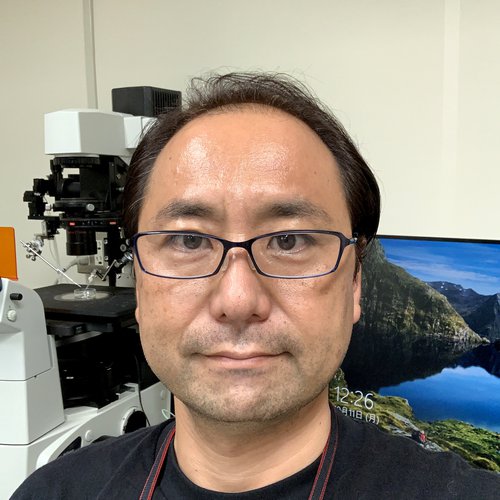The Future of Radiological Protection
Session 2: Risks & Effects
Moderator: Dominique Laurier
 |
Revisiting Next Generation Effects of Ionizing Radiation
|
|
Author(s): John D. Mathews (IMelbourne School of Population and Global Health, University of Melbourne, Australia) |
We have long wondered whether ionizing radiation to parents, before conception, can cause gene mutations leading to adverse effects in the next generations. Animal experiments suggest that de novo gene mutations (DNM) occur with a doubling dose of about one Gy. To address this question in humans, Yeager and colleagues used whole genome sequencing (WGS) to study DNM in children of parents exposed to Chernobyl radiation before conception. The DNMs detected were predominantly single nucleotide variants (SNV), which did not increase in frequency with estimated parental radiation doses. These negative results were consistent with earlier studies in humans and mice. However, the exoneration of SNV as mediators of transgenerational radiation effects does not show that such effects do not exist. Indeed, it is much more plausible that radiation would mediate its mutational effect through gene deletions and other copy number variants (CNV), as these are the mutational signatures of ionizing radiation. (SNV seem to be generated by replication errors). Although de novo CNV are less frequent than SNV, they are much larger, ranging up to many Mb in size and they contribute much more genetic variation than de novo SNV. De novo CNV, especially if large, are much more likely to be expressed as dominants with adverse phenotypic effects, including autism, congenital heart disease and cancer, to be subject to negative (purifying) selection, and to be eliminated from the gene pool within one or a few generations. In comparison, SNV tend to be selectively neutral when heterozygous. The Yeager study was unable to report on CNV, so that a definitive test of the CNV hypothesis will require a larger study using array technologies. Such a study will be of particular salience for public health if deleterious CNV prove to be caused by low dose radiation from medical X-rays and scans. In the meantime, we can bypass the genetics in a national epidemiological study to link parental records of medical radiation to the health outcomes of their children, allowing a direct test of the hypothesis that parental radiation doses, before conception, predict adverse outcomes in their offspring. Estimates of the magnitude of any next generation burden will allow us to assess the scope for prevention (e.g. by reducing medical radiation exposures for persons who may yet still reproduce).
References
1. National Research Council, in (US) Committee on Health Effects of Exposure to Low Levels of Ionizing Radiation. (BEIR VII) 2006.
 |
Possible Improvements of Methodology for Calculating Radiation Detriment in the Future
|
|
Author(s): Nobuhiko Ban1, Enora Cléro2, Ludovic Vaillant3, Wei Zhang4, Nobuyuki Hamada5, Dale Preston6, Dominique Laurier7
|
As part of its work, ICRP Task Group 102 on Radiation Detriment Calculation Methodology has discussed how to improve the way of calculating radiation detriment in the future. The methodology needs to evolve to take into account advances in healthcare technology and scientific understanding of radiation effects. It will be necessary to update reference population data as well as to expand the geographical coverage. Assumptions for the nominal risk calculation, including the LNT model, the DDREF and the risk transfer scheme, must be examined in the light of the latest scientific findings. Cancer risk models should be revised based on the up-to-date epidemiological data. Cancer severity data require updates and refinement, including consideration of other approaches to quantify the severity of diseases. It is also desirable to review the risk estimate for heritable effects, taking into account recent studies. Another important aspect is handling of the variation of cancer risk with sex and age. It is desirable to calculate lifetime risks separately for males and females and selected ages (age groups) and average these estimates in the last stage to obtain population-averaged values. This approach makes a clear distinction between science-based risk assessment and the subsequent integration of information for radiological protection purposes, thus providing a better understanding of the construction of radiation detriment. Sex- and age-related variation should also be considered in determining the values of tissue weighting factors. Consideration of non-cancer effects, specifically diseases of the circulatory system and cataracts, is one of the hottest topics. There is considerable uncertainty about the shape of the dose-response curve for these effects at low doses. It is still unclear whether there is a threshold. Whether or not to include them in the calculation of the radiation detriment currently remains an open question. Ensuring transparency and traceability of the radiation detriment calculation is becoming increasingly important. A full description of the calculation steps is necessary, and consideration should be given to the development of an open-source software to perform these calculations. Improving the way of communicating the calculation result is also desirable so that non-specialists can have a balanced perspective on the health risks of radiation.
Downloads SLIDES
 |
Reducing Uncertainties in Low Dose/Low Dose Rate Health Risks Requires International Networking in Research Implementation and Its Communication to Stakeholders
|
|
Author(s): Jacqueline Garnier-Laplace1, Dominique Laurier2, Dmitry Klokov2, Vinita Chauhan3, Jan-Hendrik Kruse1, Paul Locke4, Knut Erik Tollefsen5, Nicholas Priest6
|
The robustness of the international system of radiological protection relies on regularly updating its scientific underpinnings while providing a clear understanding of the assumptions needed to cope with the remaining uncertainties associated to radiation-induced health risks at low dose/low dose rate (i.e. below 100 mSv or below 0.1 mSv/minute). Recent reviews of biological and epidemiological data tend to provide additional support to the assumption that, for low dose, low dose rate exposures, stochastic effects (e.g. cancer risk) follow a dose response with no threshold. However, the adoption of this Linear-Non-Threshold (LNT) model remains controversial because of the large uncertainties persisting about health risks associated with low dose/low dose rate radiation exposures.
Current knowledge in low dose or low dose rate radiobiology shows that the mechanisms involved in carcinogenesis are extremely complex. The integration of biological evidence on radiation-induced cancers with epidemiological results offers a promising mechanism-based approach for a less uncertain inference from high doses/dose rates to low doses/dose rates. This approach also applies to non-cancer effects (e.g. circulatory diseases, cognitive effects, lens opacities), where interpretation of epidemiological and animal studies could be reconciled through the development of Adverse Outcome Pathways (AOP), adopting the strategy used for chemical toxicity and its regulation.
Given the importance placed on such research by public funding bodies and the broad amount of research being conducted and continued in this area across the globe, while noting national and regional ongoing efforts to effectively collaborate and co-ordinate research, ongoing and planned work merits consideration under an international meta-coordination. One way to reduce uncertainties in low dose/low dose rate health risks is to advance related research strategically, ensuring better use of key results in policy making and improving the way research findings and policies are communicated to stakeholders. To address these issues, the High-Level Group on Low-Dose Research (HLG-LDR) operating under the auspices of the Nuclear Energy Agencies (NEA’s) Committee on Radiological Protection and Public Health (CRPPH), aims to facilitate global networking of low dose research funding organisations and research implementing organisations. This initiative will also integrate a policy-oriented communication strategy on risk uncertainties. Finally, the HLG-LDR activities will enhance the impact of research and have implications for radiological protection policy, regulation and implementation, which will contribute to the revision of the International Commission on Radiological Protection system and beyond.
 |
A Proposal for the Application of Mathematical Models That Accurately Approximate Measured Data to Radiation Protection
|
|
Author(s): Yuichi Tsunoyama 1; Hiroshi Toki 2; Masako Bando 2,3
|
Recently, we have proposed a mathematical model, the Whack-A-Mole model (WAM model), which reproduces the dose rate effects observed in genetic effects research experiments in animals and plants such as mice with extremely high accuracy. Since this model can also trace the variation of the effect with time, it is possible to predict the effect under irradiation environments that are difficult to explain the method using DDREF, i.e., in situations such as the space environment where the dose rate fluctuates, and the exposure continues for a long period of time. This model also has the potential to be applied to the prediction of long-term effects in areas affected by nuclear disaster. The WAM model can also be used to the prediction of changes in tumor volume in the fractionated radiation therapy. In Japan, empirical studies for its practical application are currently being conducted in the field of cancer treatment.
Recently, it has also been suggested that the basic concept of the WAM model can be applied to explain the occurrence of chromosome aberrations in peripheral blood lymphocytes and the decrease of unstable aberrations after irradiation. We are now investigating the applicability of the WAM model to chromosome aberrations. If we are able to approximate chromosome aberrations mathematically, we expect to be able to predict changes in the number of chromosome aberrations under conditions of long-term or multiple exposures to relatively high doses, such as astronaut missions, as well as for applications in the field of radiotherapy.
In this way, the newly proposed mathematical models and the concepts behind such models concerning biological effects are becoming more accurate and reflective of actual data, compared to the models and concepts that have been referred for many years in the field of radiation protection. In this presentation, we will take the WAM model as an example, and strongly suggest the incorporation of a new mathematical model in the field of radiation protection that more accurately reflects the actual measured data in addition to the models that have been used for many years in the field of radiation protection and discuss the advantages and disadvantages of adding the new model.
Downloads SLIDES
 |
What is Needed to Keep ICRP Recommendations Fit for Future?
|
|
Author(s): Klaus Trott (Department of Radiation Oncology, Technical University of Munich, Germany) |
With ICRP 26, nearly 50 years ago, rules and regulations of radiation protection were based on the balance of risk and benefit. This was a great step forward. Ever since, the objectives for protection of human health were "to manage and control exposures to ionising radiation so that tissue reactions are prevented, and the risks of stochastic effects are reduced to the extent reasonably achievable". Some of the principles were necessarily based on the radiobiological knowledge of the time. The distinction between stochastic effects and deterministic radiation effects was based on concepts of different pathogenesis, i.e. single cell effects vs. multicell effects, yet, there are no systematic differences of radiobiological mechanisms, and similar molecular radiation effects are involved as part of pathogeneic pathways of both, cancer induction and late tissue reactions. Today, tissue reactions are characterized by a threshold, independent of the assumed pathogenic pathway. Yet, for any tissue response, thresholds are primarily determined by the choice of endpoint. In all organs, more than one radiation-induced disorder or disease has been observed. A systematic review of the different pathogenic mechanisms which may cause signs and symptoms of tissue responses identified 9 different mechanisms. It has long been known that the heart is one of the most radiosensitive organs in the body. ICRP 118 arrived at a best threshold dose of 0 Gy. Yet, in the heart five different radiation-induced diseases have been defined, each of which is initiated by radiation exposure of different anatomical structures in different parts of the heart. Also pathology and pathogenesis differ. For many years, the lens of the eye was taken as paradigm of a radiosensitive tissue. Yet, RERF published data on the risk of radiation-induced retinopathy which is as high as for cataract. Radiation-induced retinopathy might be more important than cataracts because of its severe impact on the affected person. Little research has been performed on heritable radiation effects since the pioneering studies of Sankar. The current system is based on the concept of the mutation doubling dose determined using the seven locus test, i.e. mainly deletions (not point mutations). Deletions are known in human genetics as causing genomic disorders (not the diseases with dominant inheritance). A new approach in radiobiological research towards human radiation genetics is overdue.